Longford House (Tirnascragh)
Houses within 15km of this house
Displaying 122 houses.
Houses within 15km of Longford House (Tirnascragh)
Displaying 122 houses.
| House name | Description | |
|---|---|---|
| Portumna | Reverend Lewis Hawkes was leasing a property at Portumna, valued at £16 from the Ecclesiasical Commissioners at the time of Griffith's Valuation. The Reverend Louis Hawkes of Brierfield died in 1857. A house still exists at the site. | |
| Portumna Castle | The house we know as Portumna Castle was built in the early seventeenth century by Richard de Burgo or Burke, 4th Earl of Clanricarde. It was used as the de Burgo/Burke family residence for over 200 years until it was badly damaged by fire in 1826 when it was replaced by another house close by. This second house is no longer extant. In 1906 the buildings at Portumna were valued at £40. The original Portumna Castle has been restored and is open to the public. |

|
| Grange | The Earl of Huntington's estate in Galway included a house valued at £7 at Grange, parish of Killeenadeema, leased to Patrick Murphy. A house labelled Grange House appears on the 1st edition Ordnance Survey map. On the 25-inch edition of the1890s the original house is not shown and Grange House is located at M878146. This house is now a ruin. | |
| Somerset House | At the time of Griffith's Valuation, Thomas Stratford Eyre was leasing a house valued at £20 to William Seymour. Slater refers to the house as the residence of Thomas Craddock in 1894. In 1906 the property at Somerset was held by Charles Seymour. The original house is not extant but there are extensive remains of estate architecture. |
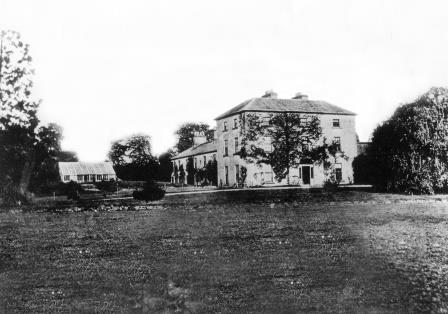
|
| Pallas | Pallas was the largest of the Nugent properties in the parish of Tynagh, which also included Spring Garden, Flower Hill and Crannagh, a property that had been used in the eighteenth century. A mansion was built at Pallas for Anthony Nugent, 4th Lord Riverston, in 1797. Slater, in 1846, refers to the Hon. Anthony Nugent residing at "The Palace". At the time of Griffith's Valuation it was the property of Anthony Nugent and was valued at £46. In 1906 it was owned by the Earl of Westmeath and was valued at £52. It was demolished after World War II. A well-preserved tower house and the remains of a large 17th century residence can also be seen at Pallas. |

|
| Hearnesbrook | The property at Hearnesbrook was occupied by George Hearn Kirkaldy at the time of Griffith's Valuation. It was also recorded as his residence by Lewis in 1837. In 1814 Hearnsbrook was the residence of Major Lyons. Slater notes it as the seat of A.J. Mackay in 1894. In 1783 Taylor and Skinner, and Wilson, in 1786, recorded it as a seat of the Hearn family. In 1885 Walford refers to William Clifford Bermingham-Ruthven as "of Hearnesbrooke". It is still extant and occupied and is the focus of a large farming enterprise. |
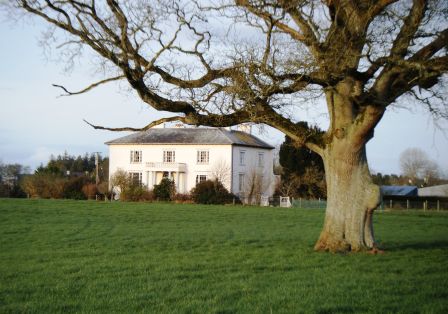
|
| Spring Garden | Spring Garden was a Nugent house in the parish of Tynagh, valued at £10 at the time of Griffith's Valuation. It had earlier belonged to the Persses but had been sold by them in the early 1850s. In 1906 this was the property of Hon. Richard A. Nugent. It is described as "in ruins" on the 25-inch Ordnance Survey map of the 1890s. | |
| Derrywillan House | A gate lodge and caretaker's house belonging to this estate were located in the townland of Redpark while the main house was in the townland of Tynagh. In 1837 Lewis records Derrywilliam House as the seat of H. Kilkelly. Taylor and Skinner record Dirry as the seat of the French family in 1783. | |
| Flower Hill | Flower Hill was occupied by Anthony F. Nugent at the time of Griffith's Valuation when it was valued at £28. IN 1894 it was the residence of Charles Nugent. Flower Hill is still extant and now operates as an equestrian centre. See www.flowerhill.net |

|
| Springvale | The OS Name Books mention the existence of Springvale House in the townland of Lisheenagat together with some plantation and ornamental ground. At the time of Griffith's Valuation, Francis Lynch was occupying a property at Lisheennagat, barony of Leitrim, valued at £9. In 1906 this property was owned by Michael Lynch. The original house is not extant though some estate buildings remain. | |
| Shannon Hill (Derryvunlam) | Edward Matthews occupied Shannon Hill House at Derryvunlum, barony of Leitrim, at the time of Griffith's Valuation when it was valued at £18. In 1906 the house at Derryvunlam, known as Shannon Hill, was still valued at £18 and still in the hands of Edward Matthews. There is still an extant house at the site. |
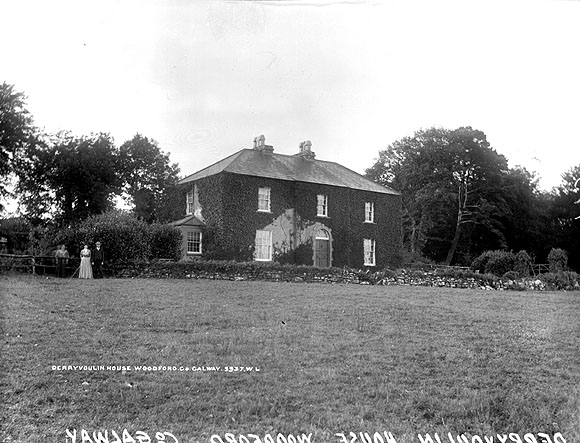
|
| Tully | Joseph Cowan leased lands and a house valued at £7 at Tully to Matthew Madden in 1856. In 1906 Tully was the property of Stephen Cowan and still valued at £7. It is still extant and occupied. |

|
| Cappaluane Glebe | Rev. Richard Eyre was leasing the Glebe house at Cappaluane, barony of Longford, from the Ecclesiastical Commissioners at the time of Griffith's Valuation when it was valued at £18. He was also leasing land from John Eyre. Cappaluane Glebe is still extant and occupied. In 2006 it was offered for sale. |

|
| Eyrecourt Castle | Eyrecourt Castle was originally built in the 1660s. In 1786 Wilson refers to it as "the fine seat of Lord Eyre, with ample demesnes". It is mentioned as a gentleman's seat in the Ordnance Survey Name Books in the 1830s. It was held in fee by John Eyre at the time of Griffith's Valuation when it was valued at £48. A fine lithograph of the Castle appears in the Encumbered Estates schedule when the estate was offered for sale in June 1854. The castle itself is now in ruins. The fine oak staircase is now in the Detroit Institute of Arts. Substantial evidence of the demesne still remains. |

|
| Fearmore House | In 1856 Edward Horsman was leasing a house in the townland of Fearmore from the Clanricarde estate. It was valued at almost £9 at the time. It is still extant and occupied. |
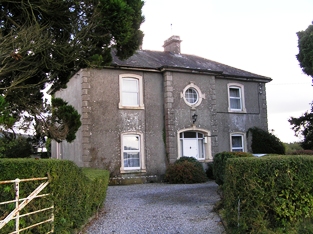
|
| Redmounthill Farm | At the time of Griffith's Valuation the property at Ballynamudagh, a steward's house and out buildings valued at £14, were part of the Pollok estate. In 1906 this property was valued at £41. On the 25-inch Ordnance Survey map of the 1890s the buildings are labelled Redmounthill Farm. The house and some portions of the farm buildings remain at the site. |

|
| Woodview | In the 1830s a "gentleman's residence" named Woodview already existed here. Slater notes it as the seat of Richard G. Daly in 1846. At the time of Griffith's Valuation Richard Eyre was leasing this property from Richard G. Daly. By 1906 this house had become part of the Pollok estate and was valued at £10. The house is still extant and occupied. |

|
| Woburn | A "gentleman's seat" called Waburn is recorded here in the Ordnance Survey Name Books of the 1830s. Slater refers to Woburn as the seat of Henry Flanagan in 1846. Buildings in this townland valued at £15 were leased by Henry Flanagan from the Clanricarde estate in 1856. Woburn is still extant though disused. |
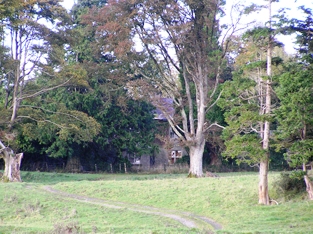
|
| Moorfield House | In 1778and 1786, this house was the residence of the Blake family. Moorfield was a steward's house on the Eyre estate at the time of Griffith's Valuation. In April 1869 the Eyre's Moorfield estate, including the house, was offered for sale in the Landed Estates court. In 1906 it was owned by James Howard Jnr and was valued at £28. The National Inventory of Architectural Heritage suggests that the extant house at Moorfield is of late nineteenth century date. |
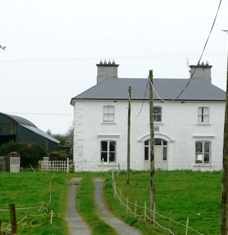
|
| Heathlawn | At the time of Griffith's Valuation, Heathlawn house, valued at £31, was occupied by George Saunderson. In 1837, Lewis records it as the seat of M. Monahan. Slater, in 1846, also notes it as the seat of Michael Monaghan. In 1906 it was the property of James H. Monahan. In 1783 Taylor and Skinner, and Wilson, writing in 1786, noted Heathlawn as a seat of the Hamilton family. It is no longer extant. | |
| Rathmore | The property at Rathmore was the residence of Major McCann in 1814. At the time of Griffith's Valuation it was occupied by James McDermott, a family with which it was associated for many years. It had also been recorded as his seat by Lewis in 1837. Earlier, in 1783, Taylor and Skinner recorded it as a seat of the Browne family as did Wilson in 1786. In 1906 it was owned by James McDermott. The house at Rathmore, though smaller than originally, is still extant and occupied. The gatelodge is also extant having undergone extensive renovation. |
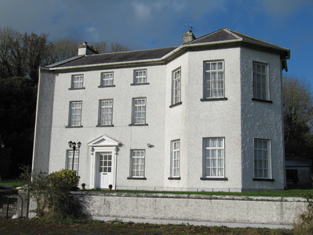
|
| Moat | A property in the townland of Moat, parish of Killimorbologue, valued at £9 was being leased from the Clanricarde estate by John Donnelly in 1856. The house was demolished in the later half of the twentieth century and no traces remain. | |
| Earlstown | In 1786 Wilson refers to "Capasell" s the seat of Mr. Devenish [?]. The house at this location is labelled Earlstown on the 1st edition Ordnance Survey map. In 1846 Slater refers to Robert Grace resident at Earlston. Robert Eyre was leasing a property in the townland of Cappasallagh, parish of Kilmalinogue, barony of Longford, valued at £11 from the Clanricarde estate in 1856. There are still occupied buildings at this site, the focus of a large farming enterprise. |

|
| Corr Lodge/Corr House | At the time of Griffith's Valuation the property at Corr was being leased by R.P.Dolphin to Edmund Mahon. In the 1780s, both Taylor and Skinner and Wilson recorded Corr as a seat of the Dolphin family. Slater refers to it as the seat of Redmond D. in 1846. By the 1890s it had become known as Corr House. In 1906, the mansion house at Corr, valued at £15, was owned by Marcella Blake Forster. It is no longer extant. |
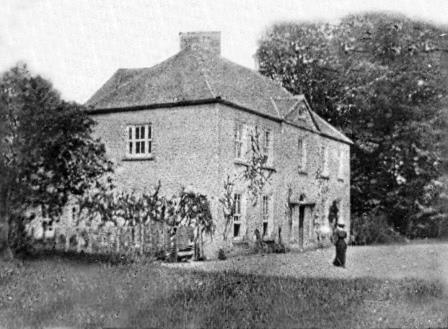
|
| Derryhivney House/Harding Grove | Wilson may be referring to this property when he mentions the ruins of a castle at "Derryborn" and the seat of Mr. Hind. In 1814 this house was known as Harding Grove and was the seat of Jonathan Harding. It appears under this title on the 1st edition Ordnance Survey map. The Harding family also had an estate in north Tipperary. In 1846 Slater refers to "Derryhiney" as the seat of Cuthbert Fetherston. At the time of Griffith's Valuation, the house at Derryhivney was occupied by him. On the 25-inch map of the 1890s it is labelled Derryhivney House. David England Young of Ballygibbon, county Tipperary and Harding Grove, county Galway is recorded in Walfords (1910). |

|
| Prospect (Meelick) | In 1856 Joseph Cowan was leasing a property at Prospect, in the parish of Meelick, barony of Longford, from Francis Usher. In 1837 Lewis recorded Prospect as the seat of C.A. O'Malley. Slater refers to it as the seat of John Smith in 1846. In 1906 Prospect was the property of Ernest Kenny and valued at £12. In 1778 and 1786, this property was the residence of the French family. Prospect House is still extant and occupied. |
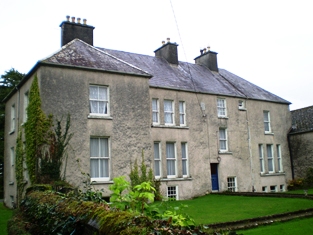
|
| Kilquain | At the time of Griffith's Valuation Allen Pollok held a property in Kilquain valued at £5 10s which was used as a steward's house. There is evidence of estate architecture in the vicinity but twentieth century buildings on site. | |
| Gurtray/Gortrea/Gortray/Fairfield | Writing in 1786 Wilson refers to this house as Fairfield, the seat of Mr. Hamilton. Ambrose O'Kelly was the owner of a house valued at £20 in Gortrea or Fairfield, parish of Kilmalinoge, barony of Longford, county Galway in 1856. Slater refers to "Gurtray" as the seat of John Appleyard O'Kelly in 1894. In 1906 this house was the property of John A. O'Kelly. According to family tradition the house lost its roof on the Night of the Big Wind in 1839. It is still extant and occupied and in 2007 was offered for sale. |

|
| Raheen | At the time of Griffith's Valuation, Clifford Trotter was leasing a property valued at £7 along with 284 acres to James Lynam. This property is still extant and occupied. |
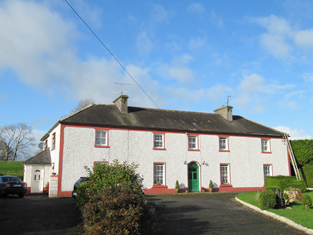
|
| Fairy Hill | Thomas Doolan was leasing a property at Fairy Hill, valued at £20, to Charles Cooper at the time of Griffith's Valuation. Slater had noted it as the residence of Thomas Doolan in 1846. In 1894 Slater records Fairy Hill as the seat of Colonel Cheevers. This house is still extant. |
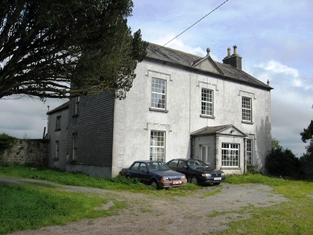
|
| Palmerstown ( Pokoroko) | In 1814 a house at Fairy Hill was the residence of Mr. Palmer. This property was held on a lease renewable forever from the Clanricarde estate. It is recorded in Lewis under Portumna town. In 1865 it was occupied by Lewis Goodbody who had purchased it in the Landed Estates Court in 1861. The sale notice refers to the house as "Pokoroko" and this title appears again in the Cunningham sale report of June 1886. However on both the 1st and 25-inch editions of the Ordnance Survey map it is labelled Palmerstown House, the name by which it is still known. It is still extant and occupied. |

|
| Thornfield | Slater refers to Thornfield as the seat of John Davis in 1846. In 1856 Thomas Galbraith was leasing a property valued at £7 in the townland of Thornfield, parish of Lickmolassy, barony of Longford, from the Clanricarde estate. It is no longer extant. | |
| Gortaha House | Cuthbert Featherston held a property valued at £10 in the townland of Gortaha, parish of Lickmolassy, barony of Longford, in 1856. It is labelled Gortaha House on the 1st edition Ordnance Survey Map. The 25-inch map of the 1890s records that it was "in ruins" and very little now remains. | |
| Willmount or Gortnacloghy | In 1856 Matthew McDonagh was leasing a property valued at £19 in the townland of Gortnacloghy, parish of Lickmolassy, barony of Longford, from the Clanricarde estate. This house was also known as Wilmount or Wellmount. |

|
| Oakley Park | At the time of Griffith's Valuation, John Cunningham was leasing a house valued at £13 at Gowil, parish of Lickmolassy, from Anne Shewbridge. This appears to be the house known as Oakley Park, occupied in the 1870s by the Pigot family. It is still extant and occupied. |

|
| Ormond View | The representatives of Redmond Dolphin were leasing a property at Ballycrossaun, barony of Longford, to John D. Lemon at the time of Griffith's Valuation when it was valued at £12. Slater notes this property as the seat of Joseph Lemon in 1846. Hogan states that this house was formerly known as Waterview. Ormond View is still extant and occupied. |
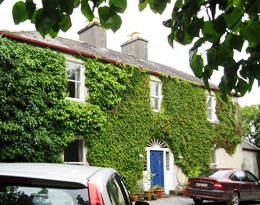
|
| Lisduff | Thomas Ellis was occupying the house at Lisduff at the time of Griffith's Valuation when it was valued at £18. Earlier, in 1837, Lewis records Lisduff as the seat of a Mr. Lyons. Taylor and Skinner recorded Lisduff as a seat of the Kelly [Browne Kelly of Westport] family in 1783. Documents in the National Library of Ireland indicate it was in the ownershop of Henry Brush in 1862. Slater refers to is as the seat of John Abbott in 1894. In 1906 this property was occupied by H.D.M. Barton who also held over 250 acres of untenanted land in the area. The house is still extant. |
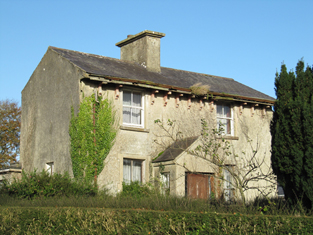
|
| Longford Lodge | In 1846 Slater refers to Patrick and Stephen Kelly, both of "Longford House". Patrick Kelly was occupying the house at Gortadullisk, barony of Longford at the time of Griffith's Valuation. In 1837 Lewis had recorded Longford Lodge as the home of a Major Kelly. In 1906 it was owned by Denis Kelly and was valued at almost £15. It is no longer extant though part of the walled garden remains. |

|
| Greenfield/ Fahy | In 1777 a house at Fahy is recorded by Taylor and Skinner as a Hamilton residence. In 1786 Wilson mentions Faghy as the seat of Mr. Hamilton. Lewis records Fahy as the seat of T. Burke in 1837. The OS Name Books state that the gentleman's residence in the townland of Fahy was called Greenfield. At the time of Griffith's Valuation, Pierce Joyce held over 400 acres of this townland together with buildings valued at over £6. The house is labelled Greenfield on both the 1st and 25-inch Ordnance Survey maps. Some ruins survive at the site. | |
| Lismore Castle | In 1778 Lismore Castle was the residence of the Daly family. Wilson refers it as the seat of Anthony Daly in 1786. It is described as "in ruins" on 25-inch Ordnance Survey map of the 1890s. Some elements of the demesne are still visible. |

|
| Quainsborough/Quansbury Lodge/Stowlin | Originally a Daly house. In 1783 Taylor and Skinner and Wilson, in 1786, record Queensborough as a seat of the Earl of Louth. Slater refers to Quansborough Lodges as the seat of William B. Burke in 1846. Mentioned in the sale notice for portion of the St. George estate in November 1853. John P Watson was the occupier of a house valued at £13 in the townland of Stowlin, parish of Kilquain, barony of Longford, in 1856. In 1906 this house was owned by Kate Watson and was valued at £33. Buildings are still extant at site though may have been modernised. The Clonbrock Estate Papers, Collection List 54 in the National Library contain early 19th century rentals of the Quansbury estate. In many documents the name of this house is spelt Quansbury but on the Ordnance Survey maps it is spelt Quainsborough. |
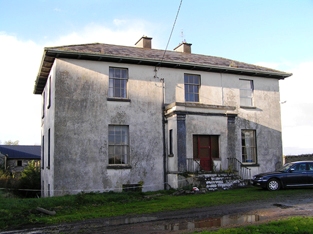
|
| Ballydonagh | Lewis records Ballydonagh as the seat of F. Madden in 1837. At the time of Griffith's Valuation the house was occupied by Francis Madden leasing from the Haughton estate and was valued at almost £4. Substantial ruins still remain at this site. | |
| Ballymore Castle | At the time of Griffith's Valuation Ballymore Castle was occupied by Thomas Seymour. This house continued to be the seat of the Seymour family until at least 1906 and was noted by Slater as the seat of Walter G. Seymour in 1894. It is still extant and occupied. |
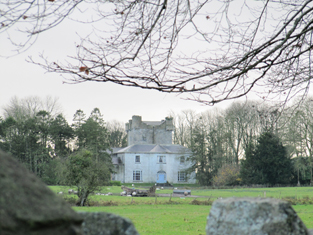
|
| Bellevue/Lisreaghan | Belview was the main seat of the Laurence family in east Galway. Wilson, writing in 1786, refers to "Belle-view" as the seat of Mr. Lawrence "with beautiful plantations". In the 1850s it was valued at £42 and was occupied by Walter Laurence jun. In 1906 it was the property of Rev. Charles Lawrence. It is no longer extant but a famous gateway, erected in support of the Volunteers of 1782, is still visible. |

|
| St. Brendan's | Archdeacon Butson is listed as the occupier of the house in Glebe townland in 1855 when it was valued at £25. It is labelled St. Brendan's on both the 1st and 25-inch edition Ordnance Survey Maps. This house is no longer extant. |
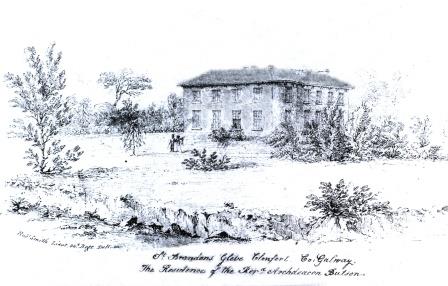
|
| Abbeyland Cottage | A herd's house in the townland of Abbeyland Great, parish of Clonfert, barony of Longford, was part of Archdeacon Butson's estate. It was valued at £1 10 at the time of Griffith's Valuation and leased to John Kenny. This house is no longer extant. | |
| Abbeyland House | Archdeacon Butson was leasing a steward's house, valued at £8, in the townland of Abbeyland Great, parish of Clonfert, barony of Longford, to Allan Pollok, at the time of Griffith's Valuation. Buildings still exist at the site. | |
| Cloonconra | A house in the townland of Cloonconra, parish of Clonfert, barony of Longford, was valued at £10. It was part of Archdeacon Butson's estate at the time of Griffith's Valuation. It is labelled Cloonconra Farm on the 25-inch Ordnance Survey map of the 1890s. A farm still exists at the site. | |
| Clonfert Palace | Clonfert Palace was built in the late 17th century and altered in the 18th century. It was the residence of the Church of Ireland bishop of Clonfert until 1836 when that diocese was amalgamated with Killaloe. At the time of Griffith's Valuation, John E. Trench was leasing the property valued at £20 from the Ecclesiastical Commissioners in the townland of Clonfert Demesne, barony of Longford, county Galway. In 1906 it was in the ownership of Charles O'Hara Trench. Later occupied by the British fascist leader, Oswald Mosley. It was damaged by fire in 1954 and has been derelict since. |
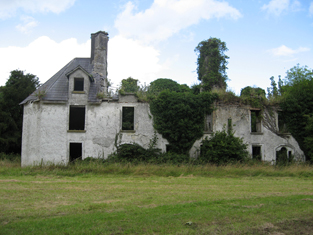
|
| Clonfert Cottage | In 1855, a house valued at £8 and belonging to the representatives of Robert Seymour, was leased by James Buchanan. Slater refers to "Clonfert Cottage" as the residence of Robert Seymour in 1846. On the 25-inch maps of 1890s the property at this site is labelled "Constabulary Barracks". | |
| Cloonkea | John Eyre was leasing a house valued at £10 from the estate of Dr. Duggan in 1855. The house was located at Cloonkea, barony of Longford. It was advertised for sale in 2007. |
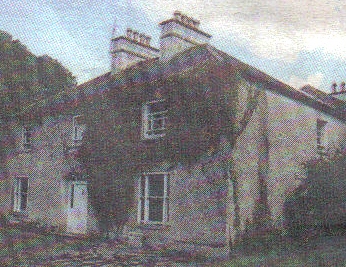
|
| Lismore | Henry Kenny was leasing a property valued at £8 from Lord Dunsandle in 1855. It was located at Lismore Demesne, parish of Clonfert. Lismore Castle is shown there on the 1st edition Ordnance Survey map. By the 1890s this building is in ruins but Lismore Farm (M943160) is located nearby. Ruins of both buildings are still visible at the site. MacLysaght, in his 1944 report on the Dunsandle papers, notes the existence of deeds relating to Fergus Madden of Lismore. | |
| Hemmings Ville | The representatives of Robert Seymour were leasing a house valued at £6 and almost to 250 acres to Sidney Smith in 1855. This property is labelled "Hemming's Ville" on both the First and 25-inch editions of the Ordnance Survey maps. There is still an extant house at the site. | |
| Kilnaborris Dower House | John Seymour was leasing a property valued at £8 from Hubert Moore at the time of Griffith's Valuation. It was located in the townland of Kilnaborris, parish of Clonfert. Kilnaborris Dower House is still extant and now offered as holiday accommodation. |
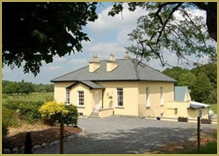
|
| Shannon View | Belinda C. Madden is listed as the lessor of two properties in the townland of Kilnaborris, parish of Clonfert, in 1855. The property which appears to have been known as Shannon View was vacant at this time. It was valued at £12. In July 1889 property at Kilnaborris, or Shannon View was offered for sale in the Land Judges' Court by William C. Bermingham Ruthven. The sale was adjourned. In 1783 Taylor and Skinner had recorded it as a residence of the Madden family. In 1786 Wilson refers to Kilnaborris as the seat of Mr. Madden. The National Inventory of Architectural Heritage suggests the house now extant on the site was built c.1870. It suffered fire damage in the twentieth century but was rebuilt c.2002. The house is now known as Lairakeen. |
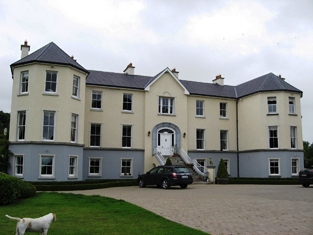
|
| Shannon Grove | Shannon Grove was valued at £20 and was leased to Hubert Moore in 1855. William R. Seton was the owner of a house valued at £65 in the townland of Kilnaborris in 1906. Leet's Directory records Shannon Grove as the residence of Hon. B. Yelverton in 1814. A substantial house still exists at Shannon Grove. |
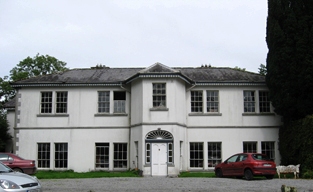
|
| Killeragh | At the time of Griffith's Valuation, Thomas Kenny was occupying a property valued at £5 together with 180 acres, in the townland of Killeragh, parish of Clonfert, barony of Longford. A house is still extant at the site. | |
| Oghil | At the time of Griffith's Valuation, Allan Pollok held a property at Oghil More townland, parish of Clonfert, on which a house was in progress, together with a mill and other buildings. The property stood on 368 acres. The mill chimney was demolished during the later twentieth century but many of the other buildings remain. | |
| Sycamorehill | At the time of Griffith's Valuation, Allan Pollok held a property at Sycamorehill, parish of Clonfert, valued at £16. Molloy states that this house was burned during land agitation on the Pollok estate in the 1850s but it was subsequently re-built. Sycamorehill is still extant and part of a large farm. |

|
| Coolcarta Farm | At the time of Griffith's Valuation Allan Pollok held a property valued at £20 in the townland of Annaghcorrib, parish of Clonfert, barony of Longford. It is labelled as Coolcarta Farm on the 25-inch Ordnance Survey map of the 1890s. Padraig Lane states that this property was damaged by fire during land agitation in the 1850s. A substantial farm still exists at the site. | |
| Kylemore Dairy | Allan Pollok held a property valued at £7 together with over 400 acres in the townland of Kylemore, parish of Clonfert, barony of Longford in 1856. On the 25-inch Ordnance survey map of the 1890s there is a property labelled Kylemore Dairy in this townland. Parts of the farm buildings remain at the site. | |
| Coolbeg House | In 1856 Thomas Stratford Eyre was leasing a property valued at £5 together with 146 acres, located in the townland of Coolbeg, parish of Clontuskert, barony of Longford to William Seymour. It is labelled Coolbeg House on the 25-inch Ordnance Survey map of the 1890s. A house still exists at the site. | |
| Crowsnest | In 1856 Allan Pollok was the occupier and lessor of a property valued at £6 together with over 460 acres, in the townland of Crowsnest, parish of Clontuskert, barony of Longford. Molloy provides a detailed description of the huge farmyard (M868239) in the neighbouring townland of Ganaveen which was part of the Pollok estate. The latter was destroyed by fire in 1920. The Crowsnest property is now in ruins. |

|
| Lismany/Lismanny | Allan Pollok's estate was centred on the property at Lismany. In 1856 the buildings there were valued at £10. In 1906 Lismanny was owned by the representatives of John Pollok. It was valued at £90. It was sold by the Pollok family in 1924 and demolished some years later. Only the cellar of the house together with the ruins of an extensive range of estate buildings now remains at Lismanny. However both gatelodges and several other estate houses are still occupied. |
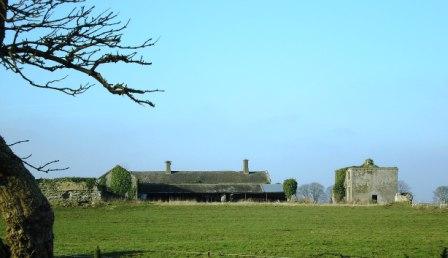
|
| Somerset Glebe | At the time of Griffith's Valuation William Seymour was leasing a property in the townland of Somerset, parish of Clontuskert, valued at £11 to Rev. Adolphus Drought. This property is now a ruin. | |
| Bettyville | At the time of Griffith's Valuation, a house at Cloonlahan, barony of Longford, valued at £5 together with over 300 acres was held by Michael McDermott. | |
| Huntly | Denis Delahunt was recorded as the occupier of a house, valued at £8, at Feagh, in the parish of Kiltormer, at the time of Griffith's Valuation. In 1906 the house at Feagh was owned by John A. O'Kelly and was valued at almost £6. A substantial modern farm exists at the site. | |
| Killwood House/Gortnaraheen Glebe | In 1856, Thomas Stratford Eyre was leasing a property, described as a glebe house, in the townland of Gortnaraheen, valued at £8, to Rev. Thomas Grome. It has become known as Killwood House by the 1890s. A house still exists at the site. | |
| Mount Prospect (Kiltormer) | In 1856 Rev. David Seymour was leasing a house valued at £12 in the townland of Kiltormer East, barony of Longford, from Thomas Stratford Eyre. In 1837 Lewis mentions a residence of the Seymour family known as "Mount Pleasant" in this area. On the 25-inch Ordnance Survey map of the 1890s, however, this house is labelled Mount Prospect. It is no longer extant. | |
| Eyreville | A late 18th and early 19th century house built for the Eyre family. Lewis records Eyreville as the seat of T.S. Eyre in 1837. In 1856 Thomas Stratford Eyre was occupying a property valued at £36 in Newtowneyre, parish of Kiltormer, barony of Longford. in 1906 it was in the possession of the representatives of Thomas D. Eyre. In 2006 permission was being sought to carry out works on the site of Eyreville. While the house is no longer extant the remains of demesne buildings exist. |

|
| Newpark | At the time of Griffith's Valuation, Peter Callanan occupied a house valued at £10 in the townland of Skecoor, parish of Kiltormer, barony of Longford. Lewis records this house as the seat of P. Callaghan in 1837. In 1894 and 1906 it was the home of Rosa Callanan. Now known as Skycur House it is still extant and well-maintained. |
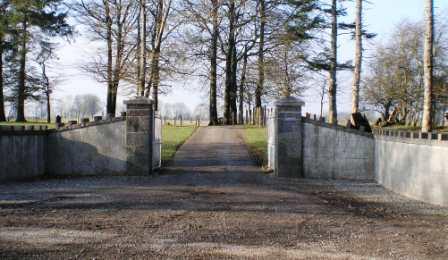
|
| Gortnamona | In the early years of the 19th century Gortnamona was the residence of Giles Eyre. It had originally been a Burke house but became part of the Blake estate in the mid 19th century when Valentine Blake married Anne Burke. Lewis records it as the seat of Patrick Blake in 1837. He was also resident there at the time of Griffith's Valuation when it was valued at £25. It is still extant but in need of repair. |
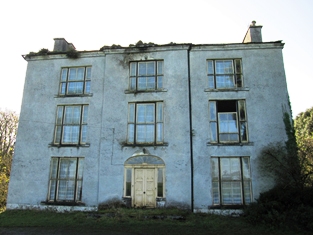
|
| Chapel Park | At the time of Griffith's Valuation Thomas Jones was both a lessor and an occupier of lands in three townlands in Clontuskert parish, barony of Clonmacnowen. This included a property valued at almost £3 at Chapel Park. A farm with modern buildings is extant at the site now. | |
| Killeen House (Portumna) | Killeen House was the birthplace of Mary Anne Kelly, otherwise known as Eva of the Nation. The house was the property of her father Edward Kelly. In 1837 Lewis recorded it as the seat of E. Kelly. At the time of Griffith's Valuation it was valued at £18. Extensive corn mills are shown at the site on the First Edition Ordnance map. Killeen House is still extant. |
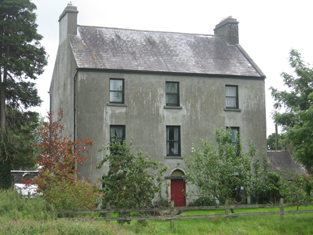
|
| Burke's Court | In 1846, Slater refers to Mrs. Bedelia Burke, resident at Clondagoff. At the time of Griffith's Valuation, Garrett Burke was leasing a house valued at £7 at Cloondadauv, parish of Ballinakill, barony of Leitrim, from the Clanricarde estate. The house is labelled Burke's Court on both the 1st and 25-inch edition Ordnance Survey maps. A house still exists at the site. An ancient Burke castle is also sited in this townland. |
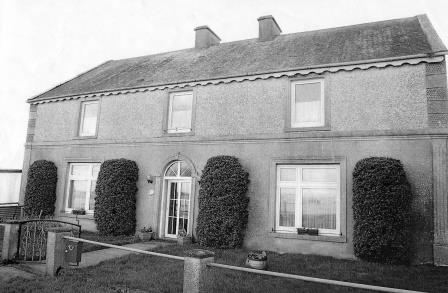
|
| Kill (Kiltormer) | At the time of Griffith's Valuation, Joseph Hardy was leasing a herd's house, valued at £5 at Kill, parish of Kiltormer, from Thomas Blackstock. No house appears at this location on the later 25-inch Ordnance Survey map of the 1890s though a modern buiding exists there now. | |
| Lisbeg | In 1906 the representatives of John Pollok were in possession of a house and buildings valued at £65 at Lisbeg, parish of Clonfert. At the time of Griffith's Valuation Allen Pollok had owned the townland of 353 acres and a herd's house valued at almost £3. The National Inventory of Architectural Heritage states that it was re-built after a fire in the 1890s and occupied by John Gardiner at that time. It is still extant and occupied. |

|
| Nutgrove | Taylor and Skinner record Nutgrove as a seat of the Donnellan family in 1783 and Wilson refers to it as the seat of Mr. Donnellan in 1786. At the time of Griffith's Valuation Anthony Nugent was leasing a property at Nutgrove or Feebrack, valued at £3 to Thomas Breheny. The site is now occupied by farm buildings. | |
| Clooncona | Laurence Mitchell was leasing a house valued at almost £4 at Clooncona, barony of Longford, from the Clanricarde estate at the time of Griffith's Valuation. There is still an occupied house at this site which in 2007 was offered for sale. Extensive nurseries are shown in this location on the 1st edition OS Map. |

|
| Chesterfield | A property named Chesterfield is recorded on the 1st edition OS Map, located at Cloonineen, parish of Kiltormer. At the time of Griffith's Valuation, Thomas S. Eyre owned this townland amounting to over 300 acres and also held a herd's house there valued at 15s. The property is still labelled Chesterfield on the 25-inch map of the 1890s but is much reduced. It is no longer extant. | |
| Lissanacody | The Pollok estate held a steward and caretakers' houses at Lissanacody, barony of Longford at the time of Griffith's Valuation, valued at £6 between them. In 1906 the property was part of the estate of the John Pollok's representatives and was valued at £7.Molloy writes that these buildings, which were unoccupied at the time, were damaged by fire in 1854. Some farm buildings remain at the site. | |
| Castle Biggs/Drominagh | The Smythe sale rental of July 1870 states that the original lease (1711) was from Godfrey Boate and Benjamin Friend to William Biggs. Built by the Biggs family on the shore of Lough Derg this house was occupied by William L. Biggs in 1814 and by Dr W. Biggs in 1837. In 1840 the Ordnance Survey Name Books refer to Castle Biggs as "a most commodious house". Edward Biggs was resident in the mid 19th century, holding the property from Sir John Power. The house was valued at £22. The sale rental of November 1853 describes this "3-storey mansion containing every necessity and a range of out offices". It was in the possession of Edward Biggs, the owner, and was bought by Captain William Tuthill. William Tuthill sold the property to Frederick Smythe in 1859. It was for sale again in July 1870. At this time the Esmondes of county Wexford bought it from Frederick Smythe. In the early 1940s owned by Owen Esmonde but purchased by the Moss family in the 1940s. It is still extant. |
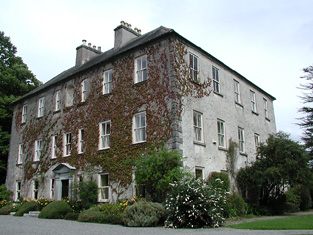
|
| Drominagh Lodge | According to the sale rental of November 1853 Dr Frederick Biggs had built a handsome residence in Shanakill for a sum exceeding £1,000. Drominagh Lodge is marked on the first edition Ordnance Survey map. Griffith's Valuation records Frederick Biggs as the occupier of the house valued at £13. He held the property from Edward Biggs. This house has been the home of the Fogarty family since the late 19th century. |
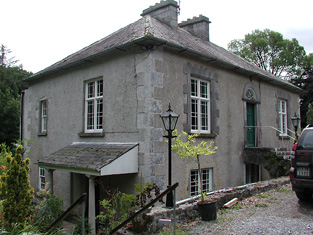
|
| Gortmore | The sale rental states that Robert Biggs built this house for about £800 in the mid 19th century. It is not marked on the first edition Ordnance Survey map. Griffith's Valuation records Samuel Biggs as the occupier of the house, valued at £11 and held from Edward Biggs. The sale rental of November 1867 advertised the sale of a valuable leasehold, the estate of Samuel and Robert Biggs, at Gortmore (222 acres and dwelling house). The 22[2?] acre estate of Samuel Biggs at Gortmore was sold to John Samuel Clarke, the petitioner, in November 1867 for £650 (The Irish law times and solicitors' journal: Volume 1, 1868 - Page 679). A house is still located at this site. | |
| Fortmoy House Lower | In 1840 the Ordnance Survey Name books refer to "Fordmoy" as "a good dwellinghouse, lately built, the residence of Mr. Prendergast".This house was vacant at the time of Griffith's Valuation. Thomas G. Prendergast was the immediate lessor and the house was valued at £11. Buildings valued at £27.5 shillings were held by the representatives of David Clarke at Fortmoy in 1906. Fortmoy House Lower is still extant. |
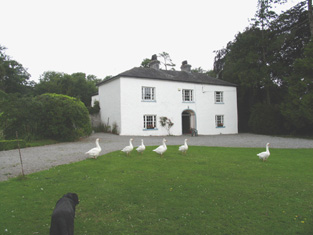
|
| Spring Park | In the mid 19th century Benjamin Armitage occupied a house valued at £10 in Gortnagrann which he held with 243 acres from William Woods. The Ordnance Survey Name Books note it as being occupied by Mr. Armitage in 1841. The site is now occupied by farm buildings. | |
| Milford | Lewis records Milford as the occasional residence of Ralph Smith. By the early 1850s it was occupied by Thomas Bunbury and held from William Woods. Bence Jones writes that it was the home of Edmond Murphy who died in 1882. In 1840, he Ordnance Survey Name Books refer to the house as the residence of John Monsell and describe the demesne as "principally composed of plantation and ornamental grounds". |

|
| Redwood House | Redwood was the home of the Bloomfield family in county Tipperary, occupied by Major Bloomfield in 1837. In 1840 the Ordnance Survey Name Books mention that Redwood was "a commodious house, at present occupied by a party of the constabulary and also the residence of Mr. Ryan, under-agent to Maj. Bloomfield". It is marked as a police station on the 1st edition Ordnance Survey map. At the time of Griffith's Valuation. Phillip Crawley held the property from Lord Bloomfield and the house was valued at £15. Redwood House later became a Trench home, valued at £18.15 shillings in 1906. It no longer exists. | |
| Walsh Park | The home of the Walsh family in the 18th and first half of the 19th centuries. Taylor and Skinner record Walsh Esq as resident at Derrylaghan [Walshpark]. The Ordnance Survey Name Books refer to the demesne as having plantations and ornamental grounds and to the house as "a good dwelling house, the residence of Jonathan Walsh" in 1840. . In the mid 19th century it was occupied by the representatives of Jonathan Walsh who held the property in fee. The house was valued at £33. This house was demolished by the early 20th century. | |
| Derrylahan Park | Bence Jones writes that this house was built in 1862 at a cost of £15,000 to the design of Sir Thomas Newenham Deane. It was the home of William Henry Head, valued at £50.10 shillings in 1906. It was burnt in 1921. |

|
| Abbeville | Home of the Hemsworth family in the 18th and 19th centuries, occupied by Thomas Hemsworth in 1814. Thomas G. Hemsworth was resident in 1837 and in the early 1850s. Thomas George Hemsworth of Abbeville owned 387 acres in the 1870s. |
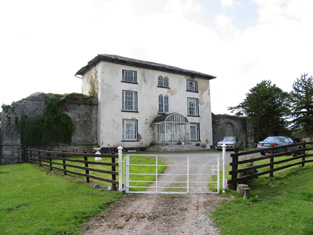
|
| Firmount | The seat of the Firman family in the late 18th century, occupied by Thomas P. Terman in 1814. The house is marked on the first edition Ordnance Survey map. The Ordnance Survey Name Books refer to it as "the mansion house of Firmount now falling into ruins, It appears to be a ruin by the time of Griffith's Valuation. The only buildings over £10 valuation were the Santa Cruise flour mill and house of Samuel Palmer. The Irish Tourist Association surveyor records "an extremely charming house converted from stabling" at Firmount and occupied by Major H.H. Deasy in the early 1940s. The surveyor states that the original house was destroyed by fire. | |
| Clongowna House | In 1840, he Ordnance Survey Name Books refer to this property as "Mount Ormond, a good dwelling house in a demesne of the same name, the residence of Rev. Mr. Troak" It is labelled on both the First and 25-edtion Ordnance Survey maps, however, as Clongowna House. Occupied by the Reverend Mr Troke in 1837 and by John Brereton at the time of Griffith's Valuation. John Brereton held the property in fee and the house was valued at £21. Still occupied by the Breretons in the 1870s. A house is still extant at this site. | |
| Gurteen | Lewis records J[ohn] Lalor as resident at Gurteen in 1837. He was a nephew of John Lalor of Crannagh and Long Orchard. The Orrdnance Survey Name Books also note Gurteen as his residence, describing it as "a good dwelling house". It was advertised for sale in July 1850. By the time of Griffith's Valuation,Michael Moyland held the house valued at £15+ and 234 acres in fee. George W. O'Brien of Gurteen, Parsonstown, owned 389 acres in county Tipperary in the 1870s. Mary Jane O'Brien held buildings valued at £12.10 shillings at Gurteen in 1906. |

|
| New Grove | Marked on the first edition Ordnance Survey map as New Grove, this house appears on the 25-inch map of the 1890s and is still known by the name, St Kierans. Occupied by J. W. Bayly in 1837 and described by the Ordnance Survey Name Books as " a good dwelling house, the residence of John Bayly" in 1840. It was occupied by Thomas Fetherston at the time of Griffith's Valuation and held from John Bailey. The buildings were valued at £19+. This property was advertised for sale in November 1851, the estate of John Washington Bayly. |

|
| Sraduff | Taylor and Skinner record Antisell Esq as the proprietor of Straduff in the 1770s. T. Antisell occupied Sraduff in 1837 and Christopher Antisell was resident in a house valued at £10+ in Sraduff in the early 1850s. The house was valued at £15+ in 1906 and was held by Monsell Antisell with 342 acres of untenanted land. This house is now a ruin. | |
| Kilcarren | A house occupied by Ralph Smith in 1814 and by A. Carew in 1837. The Ordnance Survey Name Books describe it as "a good dwelling house" in 1841. Alexander Carew, a descendant of Lynn Carew, held the property from Ralph Smith in the mid 19th century when the buildings were valued at £17+. The house is still extant and occupied. |

|
| Gurthalougha | A mid 19th century house [built by William D. Farrar], it is not marked on the first edition Ordnance Survey map or entered in Griffith's Valuation. In the 1870s William Dent Farrar was resident. William D. Ferrar was still the occupier in 1906 when the house was valued at £35. The Irish Tourist Association surveyor records Mr Kent as resident in the early 1940s. Owned by John Paul Getty III in the first decade of the 21st century and for sale in 2010 and again in 2012. |
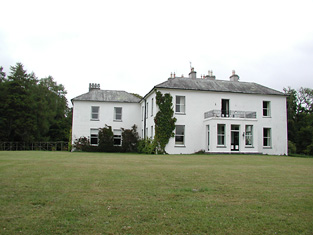
|
| Lackeen | Lackeen House is an early 18th structure attached to part of a 17th century house. John Baily was the proprietor of Lackeen Castle, Parsonstown [Birr], in 1814 and in the mid 19th century the house valued at £12.10 shillings was occupied by Hamilton English and held from Lord Cremore. This house is now unoccupied. |
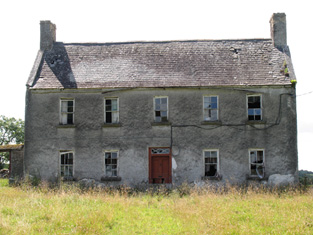
|
| Ballyquirk | In 1837 Lewis refers to the ruins of Ballyquirk castle "near which is a handsome modern house of that name". Colonel Henry Dwyer was the occupant in the mid 19th century, holding the house valued at £32 and 716 acres from Edward Newingham. |
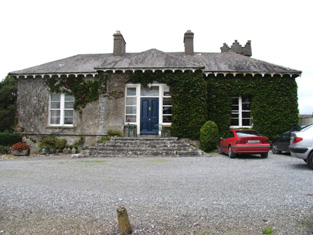
|
| Harvest Lodge | The Stoneys were resident at Harvest Lodge from at least 1837. Thomas Johnston Stoney, born 1780, fourth son of Thomas Stoney of Arran Hill held the property in fee at the time of Griffith's Valuation, when the house was valued at £30. Harvest Lodge was the home of J.M. Wilson in the 1870s. This house no longer exists. | |
| Curraghglass | J.W. Walsh is noted as the proprietor of Curraghglass in the Ordnance Survey Name Books of 1841. In the mid 19th century Thomas Meara occupied a house valued at £11 and held from the representatives of Jonathan Walsh. There is still a building located at this site. | |
| Firville | In 1841 the Ordnance Survey Name Books refer to "Ferville" as the residence of R.F. Drought. William S. Smith occupied the house in the mid 19th century which he held from Ralph Smith. It was valued at £15+. This building is still part of a farm complex. | |
| Belle Isle | A house overlooking the River Shannon, originally the home of a junior branch of the family it became the property of the 3rd Lord Avonmore through his second marriage to Cecilia O'Keeffe. The seat of 3rd Lord Avonmore in the mid 19th century held by him in fee and valued at £48. Belle Isle was occupied by Thomas Maunsell in 1814 and by Lord Avonmore in 1837. This house is no longer occupied. |

|
| Portland Park | A residence of the Stoney family from at least the 1770s, when it was purchased from the Earls of Antrim. Occupied by Richard Stoney in 1814 and by J. Chapman in 1837. In 1841 the Ordnance Survey Name Books described it as "a spacious building, the residence of Thomas B. Stoney with a great demesne". At the time of Griffith's Valuation he held the property in fee when the buildings were valued at £40. Portland Park remained in the possession of the Stoney family until it was burnt in 1936 (Irish Times, 11 May 1936). It is now a ruin. |
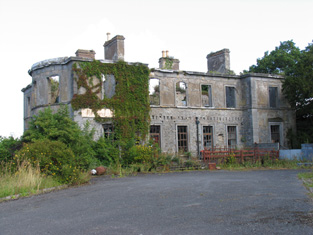
|
| Redwood | Marked on the first edition Ordnance Survey map as Moatfield House and on later maps as Redwood. Moate-field, Burris-a-kane, was the home of William Clarke in 1814. In 1841 the Ordnance Survey Name Books refer to it as "Moat Field, a good dwelling house the residence of Miss Clarke". In the mid 19th century Robert Daly held a house valued at £15 and 324 acres in Redwood from Lord Bloomfield. Redwood is still extant. | |
| Slevoir | Lewis records R. Monsell as resident at Slevoir in 1837. The Reverend Francis Synge was the occupier at the time of Griffith's Valuation, holding the property from the representatives of Mr Steele. The buildings were valued at £34. The National Inventory of Architectural Heritage states that the present house was built in the Italianate style in the 1870s for Lieutenant Colonel J.F. Hickey by John McCurdy. In the early 1940s General Carlos J. Hickie was the owner and the house contained very beautiful furnishings and valuable family pictures according to the Irish Tourist Association surveyor. This house sold for over £3 million in 2000 and was offered for sale again in 2011. |
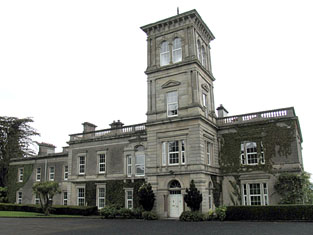
|
| Newlawn | Originally a Carroll home that passed through marriage to the Dempsters. The Ordnance Survey Name Books mention J.Dempster as the proprietor of Newlawn in 1839 though elsewhere they refer to it as the residence of Mr. Egan, distiller. In the mid 19th century David Dempster was the occupant holding the property from Dr Dempster, the buildings were valued at £13.15 shillings. The building is still in use as a house. |
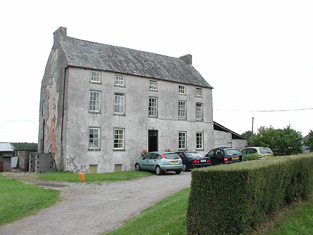
|
| Ballinderry | In 1840 the Ordnance Survey Name Books refer to Ballinderry House as "a good house in a demesne with some trees". James Demspter was noted as the proprietor at the time. By the time of Griffith's Valuation it appears to be the mill manager's house, occupied by William Egan and held from Timothy Hogan, part of a building complex valued at £97, known as Santa Cruise Mills. Now in use as a private residence. |
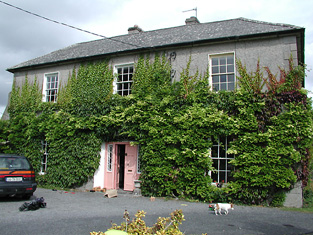
|
| Ashgrove | Lewis records B. Talbot as resident. In 1840 the Ordnance Survey Name Books record that the house derived its name from "a large ash grove, recently cut away". A house valued at £15+ at the time of Griffith's Valuation when it was occupied by Reverend Benjamin Talbot and held from Sir John Power. Reverend Benjamin was still resident in the 1870s. Ash Grove is still extant. |
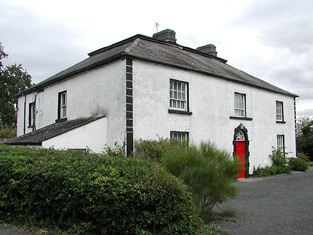
|
| Shannon View | Close to the shore of Lough Derg, this house is marked on the first edition Ordnance Survey map. In 1840 the Ordnance Survey Name Books refer to it as "a good dwelling house". At the time of Griffith's Valuation it was occupied by Anne Talbot, held from the Reverend Benjamin Talbot and valued at £4.10 shillings. Frances Talbot of Shannonview owned 42 acres in the 1870s. It is still extant. |

|
| Derrinvohil | This house was not built at the time of the first Ordnance Survey. It bears the name of a townland but was originally located in the townland just to the west of Derrinvohil. The townland boundary has now altered and the house is in the townland of Derrinvohil. It was built by James Jocelyn Poe in 1845. Valued at £17 at the time of Griffith's Valuation and held from the Messrs Saurin. The house continues to function as a residence. |
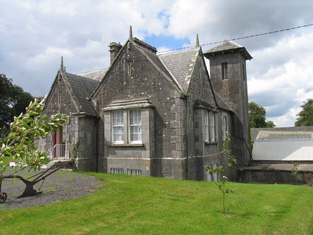
|
| Somerset | The National Inventory of Architectural Heritage states that this house was built in 1875. It appears to have replaced an earlier house also known as Somerset marked on the first edition Ordnance Survey map circa 1840. In 1841 the Ordnance Survey Name Books refer to Somerset as "a small demesne and good dwelling house, the residence of Mr. Going". It was the home of John O'Meara in the mid 1870s. In 1906 William H. O'Meara occupied a house valued at £12+ in the townland of Abbeville. |
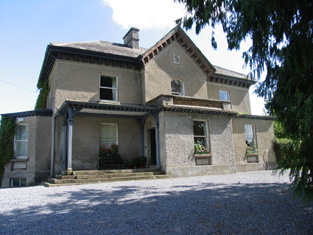
|
| Annagh | In 1841 the Ordnance Survey Name Books describe Annagh as "a good dwelling house, the residence of John Kennedy". At the time of Griffith's Valuation, it was valued at £10, occupied by John Kennedy and held from George Kinahan. In 1906 held by the representatives of George Bolton. This house is now a ruin. | |
| Woodfield House (Donanaghta) | At the time of Griffith's Valuation, Timothy Egan was leasing a property valued at £7 from the Clanricarde estate. On the 25-inch map of the 1890s the house in this townland is labelled Woodfield. It is still extant and occupied. The first edition Ordnance Survey map notes an old brewery nearby. |
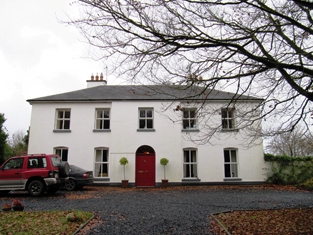
|
| Palmerstown Cottage (Lodge) | At the time of Griffith's Valuation, Timothy Joyce was leasing this property from the Palmer estate when it was valued at £5. It is still extant but not currently occupied. | |
| Annaghcallow | The property at Annaghcallow was leased by John Ryder from Cornelius O'Kelly at the time of Griffith's Valuation, when it was valued at £3. A farm still exists at the site. | |
| Rockview (Dorrha) | In 1840 the Ordnance Survey Name Books refer to Rockview House as "a good mansion house, the residence of Captain Corrigan". By the time of Griffith's Valuation this house was occupied by John Hemsworth, leasing from Mary Nunn and representatives of Richard Donovan. The buildings were valued at almost £7. Rockview House is still extant. |
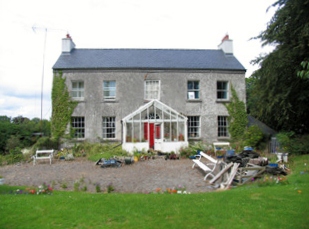
|
| Ross Cottage/House (Dorrha) | In 1841 the Ordnance Survey Name Books refer to Ross Cottage as "an elegant built cottage, the residence of Mr. Smyth", the proprietor of which was R. Hemsworth. The house is labelled as "Ross House" on both the 1st and 25-edition Ordnance Survey maps. By the time of Griffith's Valuation, it was occupied by Thomas Hernon, leasing from John J. Hemsworth and the buildings were valued at almost £8. The house is still extant and occupied. |
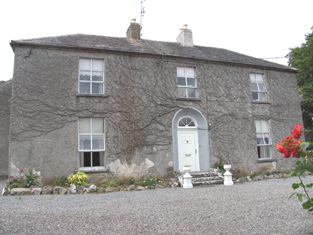
|
| Roden House | In 1841 the Ordnance Survey Name Books describe Roden House as "a good dwelling house". C.W. Hemsworth is noted as the proprietor. At the time of Griffith's Valuation, it was occupied by Thomas R. Deane, leasing from Thomas Hackett, when the buildings had a valuation of almost £3. The National Inventory of Architectural Heritage dates this property to 1784. It is still extant and occupied. |
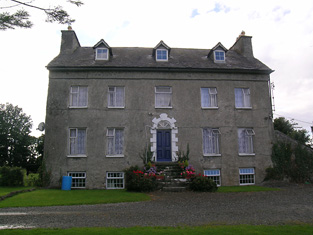
|
| Crannagh House | There are references to a house owned by the Nugents at Crannagh in the eighteenth century but there is no substantial house shown on the First Edition Ordnance Survey map. Slater refers to "Crane" as the seat of Arthur Nugent in 1846. The townland is in Arthur Nugent's possession at the time of Griffith's Valuation but there is only a caretaker's house of nominal valuation. However, the 25-inch Ordnance Survey map of the 1890s shows a substantial building labelled Crannagh House. This property is no longer extant. | |
| Clonfinane House | In 1841 the Ordnance Survey Name Books refer to a house in the townland of Clonfinane as Moorefield House. There is reference to a communication from the Earl of Portarlington that he did not know of any such place on his estate with a following note by John O'Donovan stating "but your tenant built a house and gave it a name"! The house is described as " a good dwelling house, the residence of Maunsell Antisell". However, on the 1st edition Ordnance Survey map, the house is labelled "Clonfinane House" perhaps indicating that Lord Portarlington prevailed. At the time of Griffith's Valuation, the house in this townland is occupied by the representatives of Jonathan Walsh and valued at almost £4. A house and farm are still extant at the site. |

